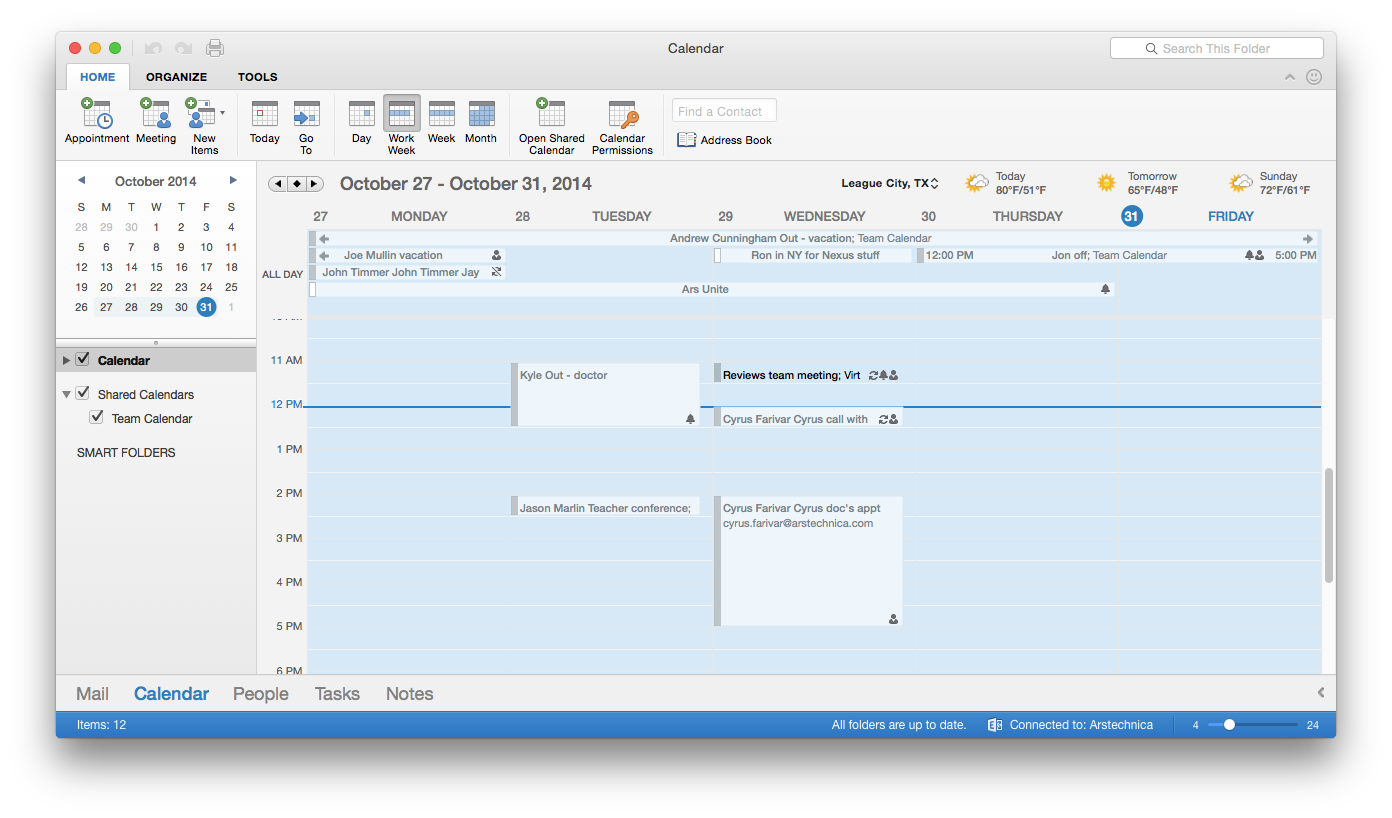Mac Calendar Outlook For Mac 2011
On the iTunes Info tab, for Address Book Contacts, try All Contacts. The option for Selected groups list the same group names (or categories) as you have in Outlook such as Home, No category etc.
[ Editor’s note: This is a review of the final, shipping version of Microsoft Office 2011 for Mac. Outlook 365 for mac 2017 why can't i save as a template?. The software was provided to Macworld by Microsoft in advance of the suite’s general release.] is a new e-mail client and personal information manager from Microsoft, not just an upgrade to its predecessor, ( ). Outlook 2011 has some features that Entourage had, but if you approach Outlook 2011 expecting it to be an upgraded Entourge, you’re going to be frustrated.
Outlook 2011 for Mac is an older email and calendar application used by Cornell faculty, staff, and graduate and professional students. Microsoft no longer distributes Outlook 2011 and has announced that support will end in 2017. Open shared calendar: Outlook 2011 for Mac In order to open a shared calendar, you must first be granted the appropriate access. In the File menu, select Open and then click Other User's Folder. My delegate adds attachments (Word file, PDF file, simple text) relevant to my meeting in my calendar entry. On Outlook 2010 for Windows, I can view the attachment.
It's not very straightforward. Hope this helps. Segel-Pingi wrote: Thnx for the screenshots. But when I open SyncServices in Outlook it only offers sync-options for contacts.
About this Article.
How they could not include that sync is beyond me. Backwards from entourage if that's possible. Anyway, moving on. Any help with this would be greatly appreciated.
Data like supervisor/supervisee information don’t show up if you aren’t using Exchange/AD, and you get an incorrect error message for that screen that there’s no directory service available—there is a directory service, just not AD. Providing directory/LDAP mapping information would be helpful in allowing system administrators to work around some of these issues.

Another quibble is that the default compose setting can’t be set per account, so you can’t have one account that defaults to HTML and another that defaults to plain text. It’s a power feature and the Outlook development team said that it wasn't able to add it to the initial release.
I, of course, wish i didn't have to do this.I didn't realize that my iphone would not sync with outlook 2011 when I just purchased it.not happy! How they could not include that sync is beyond me. Backwards from entourage if that's possible. Anyway, moving on. Any help with this would be greatly appreciated. I'm a pretty newbie mac user and would appreciate any guidance.
Apple disclaims any and all liability for the acts, omissions and conduct of any third parties in connection with or related to your use of the site. All postings and use of the content on this site are subject to the.
Outlook For Mac 2011 Help
Setting up events has changed a bit. There are now two different kinds of events: appointments and meetings.
I cannot find the scren you are referring to. Where can I find your first screenshot?
Mac Calendar Outlook For Mac 2011 Shared
To give your calendar a name, click the words Untitled Folder and then type a new name. To delete a calendar, right-click its name and choose Delete from the pop-up menu. • Scale: In any view except Month, drag the Scale slider left and right to increase or decrease the space between the lines in the view. This is a fun control to use. • Open Calendar: For Exchange users, click Open Calendar to display the Open Other User’s Folder dialog. Wd external hard drive for mac install.
• To see or hide a calendar, simply select or clear the check box next to the calendar name. • To delete a calendar you create, click the calendar in the navigation pane, and then on the Edit menu, click Delete. Share your calendar with someone else • In the navigation pane, click Calendar. • On the Organize tab, click Calendar Permissions. • Click Add User, type the name of the user, and then click Find. • In the search results, click the user's name, and then click OK. • In the Name list, click the user's name, and then on the Permission Level pop-up menu, click the access level you want.
Does that make a difference? On the iTunes Info tab, for Address Book Contacts, try All Contacts. The option for Selected groups list the same group names (or categories) as you have in Outlook such as Home, No category etc. None are 'named' Outlook. Apple Footer • This site contains user submitted content, comments and opinions and is for informational purposes only. Apple may provide or recommend responses as a possible solution based on the information provided; every potential issue may involve several factors not detailed in the conversations captured in an electronic forum and Apple can therefore provide no guarantee as to the efficacy of any proposed solutions on the community forums. Apple disclaims any and all liability for the acts, omissions and conduct of any third parties in connection with or related to your use of the site.